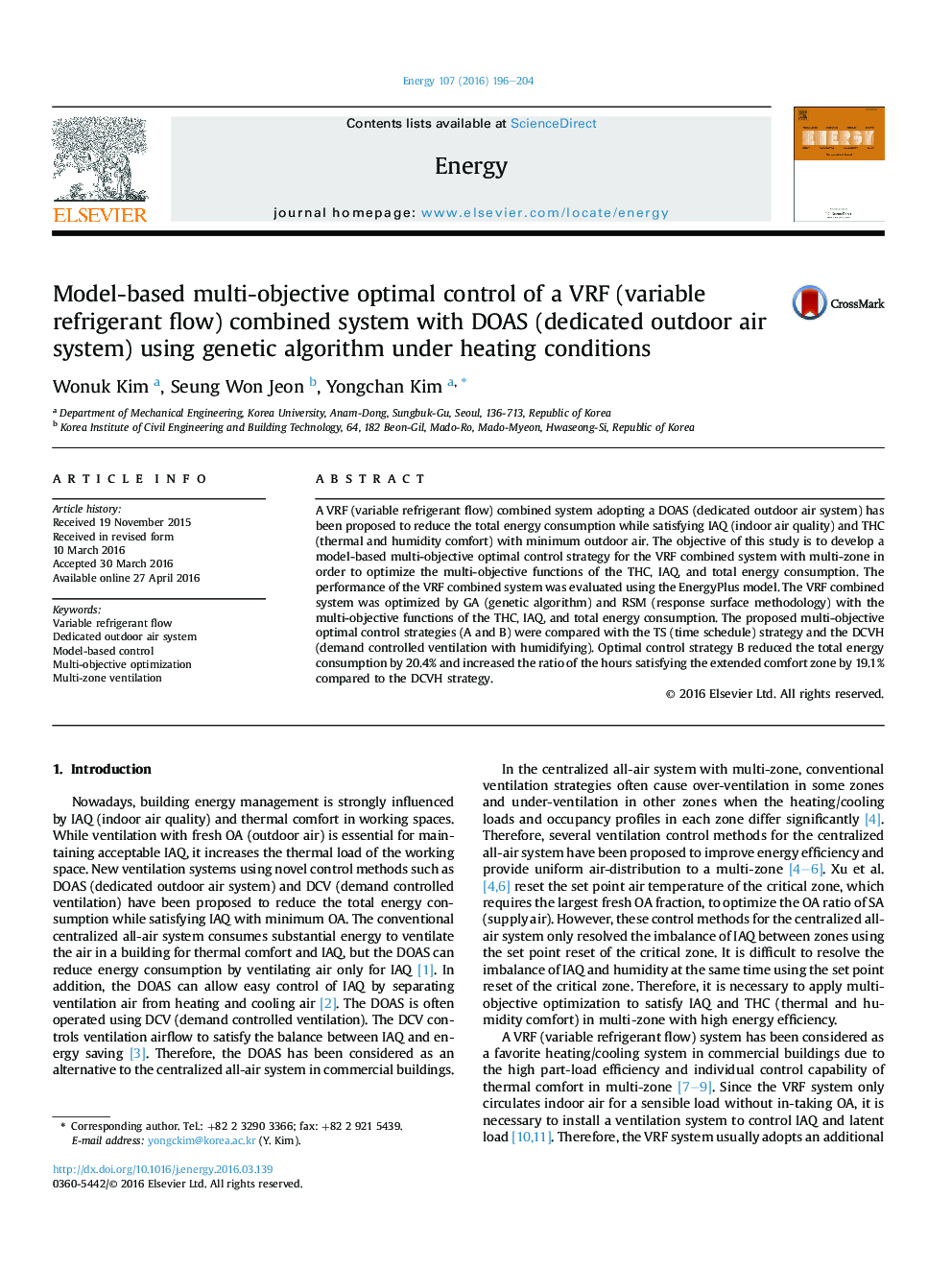| کد مقاله | کد نشریه | سال انتشار | مقاله انگلیسی | نسخه تمام متن |
|---|---|---|---|---|
| 1730831 | 1521441 | 2016 | 9 صفحه PDF | دانلود رایگان |

• A VRF combined system adopting a DOAS is considered in a case building.
• A model-based optimal control for the VRF combined system is developed.
• The performance of the VRF combined system is evaluated using the EnergyPlus model.
• The VRF combined system is optimized using GA in terms of THC, IAQ, and power.
• Optimal control with dynamic set point air temperature shows the best performance.
A VRF (variable refrigerant flow) combined system adopting a DOAS (dedicated outdoor air system) has been proposed to reduce the total energy consumption while satisfying IAQ (indoor air quality) and THC (thermal and humidity comfort) with minimum outdoor air. The objective of this study is to develop a model-based multi-objective optimal control strategy for the VRF combined system with multi-zone in order to optimize the multi-objective functions of the THC, IAQ, and total energy consumption. The performance of the VRF combined system was evaluated using the EnergyPlus model. The VRF combined system was optimized by GA (genetic algorithm) and RSM (response surface methodology) with the multi-objective functions of the THC, IAQ, and total energy consumption. The proposed multi-objective optimal control strategies (A and B) were compared with the TS (time schedule) strategy and the DCVH (demand controlled ventilation with humidifying). Optimal control strategy B reduced the total energy consumption by 20.4% and increased the ratio of the hours satisfying the extended comfort zone by 19.1% compared to the DCVH strategy.
Journal: Energy - Volume 107, 15 July 2016, Pages 196–204